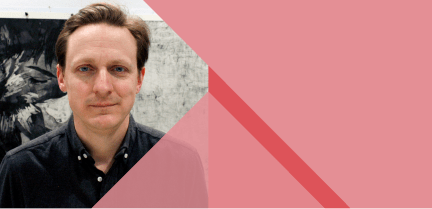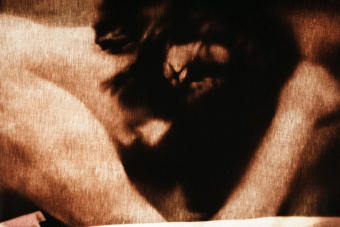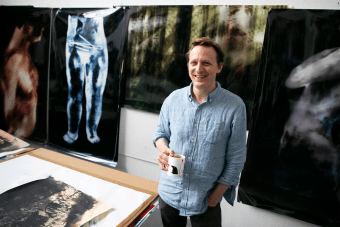The then-$25,000 award was almost precisely the cost of the used color photo processor he found in Texas – a Volkswagen-sized machine which to this day allows him to do the majority of his work across the river from his Cambridge home in Alston.
It was a “transformative” prize, he said, but even beyond the substantial professional ramifications, the 45-year-old Harvard professor is fully aware that the honor – given annually for the last 21 years to a New England-based contemporary artist – has a far broader significance. With its emphasis on innovative, visionary work in the region, Saunders appreciates both the boundary-pushing and team-building elements inherent in the criteria.
“It’s a wonderful recognition of how many seriously good artists have studied in, grown up in, maintained relationships to, or moved to this region,” said Saunders, who was raised in Baltimore before moving to Berlin, Germany, and finally Cambridge, where he now spends a majority of his time. “You don’t want to necessarily get a prize just because of where you live, but the Rappaport Prize has served this kind of community function of making visible the breadth and depth of art that has happened outside of New York City.





